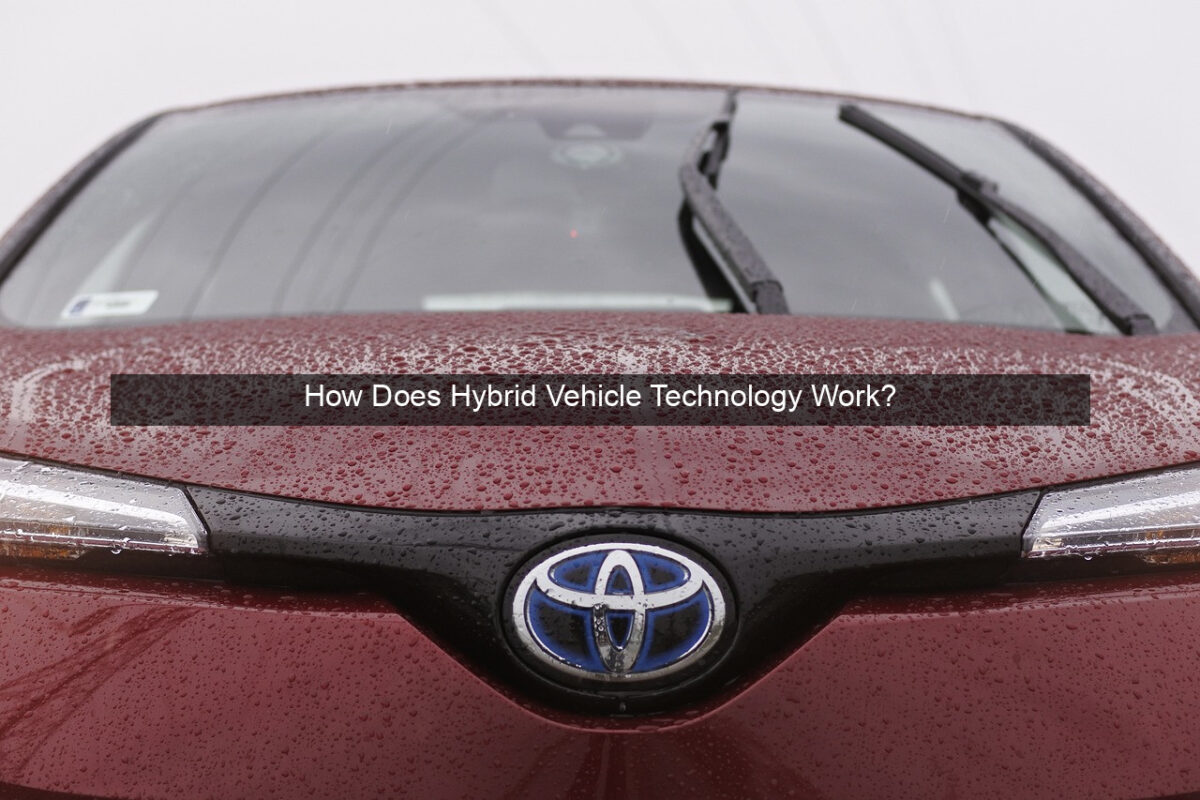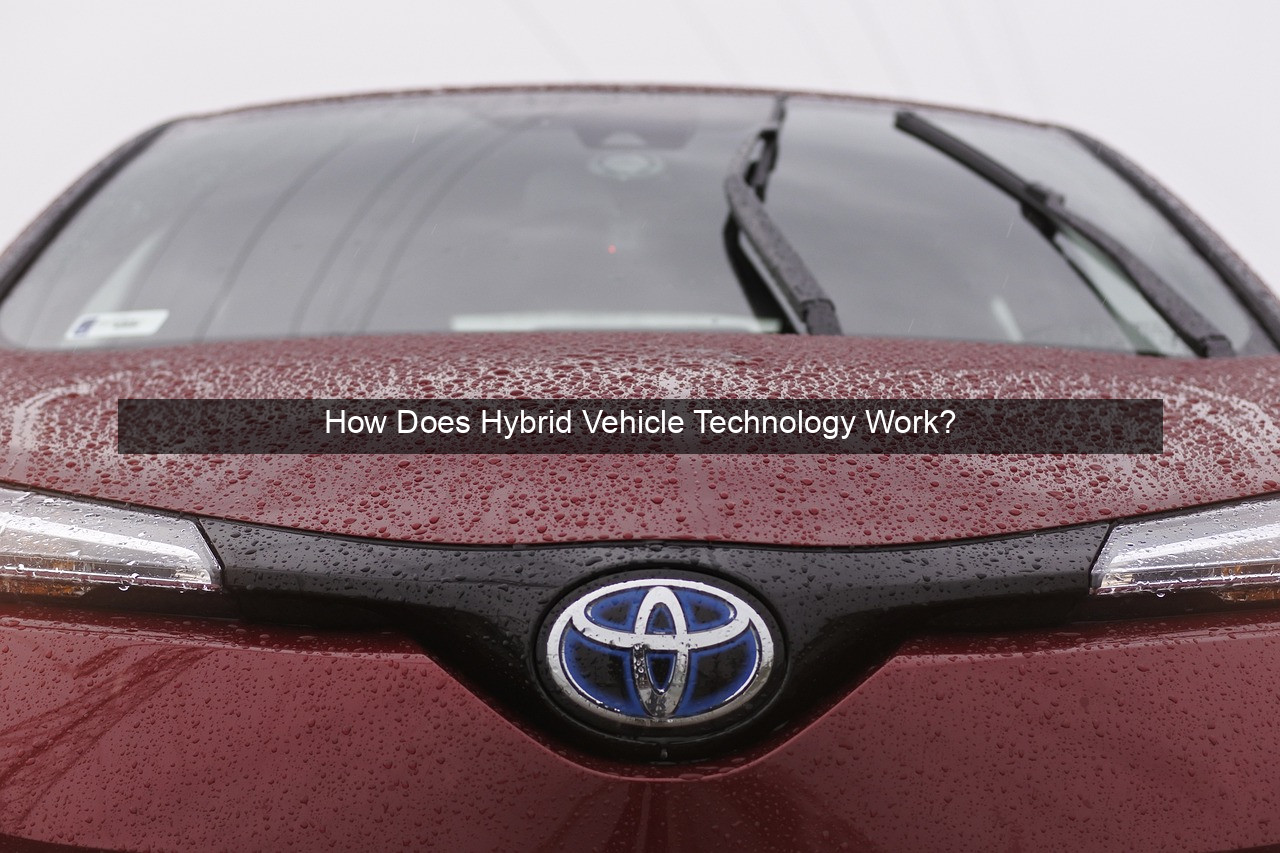How Does Hybrid Vehicle Technology Work?

- How Does Hybrid Vehicle Technology Work?
- Unveiling the Secrets of Hybrid Vehicle Technology
- The Core Components of a Hybrid System
- The Combustion Engine
- The Electric Motor
- The Battery Pack
- Different Types of Hybrid Architectures
- Series Hybrids
- Parallel Hybrids
- Power-Split Hybrids
- The Advantages of Hybrid Vehicles
- Fuel Efficiency
- Reduced Emissions
- Conclusion
- Frequently Asked Questions (FAQs)

Unveiling the Secrets of Hybrid Vehicle Technology
The automotive landscape is undergoing a dramatic transformation, driven by the growing demand for fuel-efficient and environmentally friendly vehicles. At the forefront of this revolution is hybrid vehicle technology, a sophisticated approach to transportation that seamlessly blends the power of traditional combustion engines with the efficiency of electric motors. This innovative technology offers a compelling solution to rising fuel costs and environmental concerns, while delivering a driving experience that is both smooth and responsive. But how exactly does this intricate system work? This article delves into the fascinating world of hybrid vehicles, exploring the core components, different architectures, and the numerous benefits they offer.
The Core Components of a Hybrid System

The Combustion Engine
The heart of a hybrid vehicle still beats with a conventional internal combustion engine. This engine, often smaller and more efficient than those found in traditional vehicles, provides the primary source of power, especially at higher speeds. It is optimized for fuel efficiency and works in tandem with the electric motor to deliver optimal performance.
These engines are often designed with features like Atkinson cycle operation, which prioritizes efficiency over peak power. This allows the engine to consume less fuel, particularly during cruising conditions.
The combustion engine in a hybrid isn’t always actively driving the wheels. It can also act as a generator, recharging the battery pack when needed.
The Electric Motor
The electric motor is the silent partner in the hybrid powertrain. It provides additional power, particularly during acceleration, and can even power the vehicle solely at lower speeds. This electric boost reduces the load on the combustion engine, leading to significant fuel savings.
Electric motors are inherently more efficient than combustion engines, especially in stop-and-go traffic. They can recapture energy through regenerative braking, further enhancing efficiency.
The size and power of the electric motor vary depending on the type of hybrid system. Some hybrids have more powerful electric motors, allowing for longer electric-only driving ranges.
The Battery Pack
The battery pack serves as the energy reservoir for the electric motor. It stores the electricity generated through regenerative braking and, in plug-in hybrids, can be charged directly from an external power source. This stored energy is then used to power the electric motor, reducing reliance on the combustion engine.
Hybrid vehicles typically use advanced battery technologies, such as nickel-metal hydride (NiMH) or lithium-ion (Li-ion) batteries. These batteries are designed for high power density and long lifespan.
The battery pack’s size and capacity influence the electric-only driving range of the vehicle. Larger battery packs enable longer electric driving distances.
Different Types of Hybrid Architectures
Series Hybrids
In a series hybrid vehicle, the combustion engine never directly powers the wheels. Instead, it acts as a generator, charging the battery pack, which in turn powers the electric motor. This setup provides a simple and efficient powertrain, particularly for city driving.
Series hybrids offer smooth and quiet operation, as the engine’s speed is decoupled from the vehicle’s speed.
While efficient in urban environments, series hybrids may be less efficient at higher speeds compared to other hybrid architectures.
Parallel Hybrids
Parallel hybrids offer a more direct approach. Both the combustion engine and the electric motor can power the wheels independently or in combination. This setup provides flexibility, allowing the system to optimize power delivery based on driving conditions.
Parallel hybrids can provide a balance of efficiency and performance, making them suitable for a wider range of driving scenarios.
The control system in a parallel hybrid constantly monitors driving conditions and adjusts the power split between the engine and motor to maximize efficiency.
Power-Split Hybrids
Power-split hybrids utilize a planetary gearset to combine the power from the combustion engine and electric motor. This complex yet efficient system allows for a seamless transition between electric and engine power, optimizing efficiency across a wide range of speeds.
Power-split hybrids are known for their smooth and refined operation, delivering a seamless driving experience.
This architecture is often found in more advanced hybrid systems, offering excellent fuel economy and performance.
The Advantages of Hybrid Vehicles
Fuel Efficiency
One of the most compelling benefits of hybrid vehicles is their exceptional fuel efficiency. By combining the strengths of both combustion engines and electric motors, they significantly reduce fuel consumption, especially in stop-and-go traffic.
Hybrids can achieve remarkable fuel economy figures, often exceeding 50 miles per gallon.
Reduced fuel consumption translates to lower operating costs and less dependence on fossil fuels.
Reduced Emissions
Hybrid vehicles contribute to a cleaner environment by producing fewer emissions than traditional gasoline-powered vehicles. The electric motor’s operation generates zero tailpipe emissions, and even when the combustion engine is running, it operates more efficiently, resulting in lower overall emissions.
Hybrids can significantly reduce greenhouse gas emissions, contributing to a healthier environment.
Some hybrids qualify for various incentives and tax breaks due to their lower emissions.
Conclusion
Hybrid vehicle technology represents a significant step forward in the evolution of the automobile. By intelligently combining the strengths of combustion engines and electric motors, hybrids offer a compelling solution to the challenges of fuel efficiency and environmental sustainability. As technology continues to advance, hybrid vehicles are poised to play an increasingly important role in shaping the future of transportation.
Frequently Asked Questions (FAQs)
What is regenerative braking?
Regenerative braking is a system that captures the kinetic energy normally lost during braking and converts it into electricity, which is then used to recharge the battery pack.
How does a plug-in hybrid differ from a regular hybrid?
A plug-in hybrid can be charged directly from an external power source, allowing for extended electric-only driving ranges, while a regular hybrid relies solely on regenerative braking and the combustion engine to charge the battery.
Are hybrid vehicles more expensive than conventional vehicles?
Typically, the initial cost of a hybrid vehicle can be slightly higher than a comparable conventional vehicle. However, the long-term cost savings from improved fuel efficiency can often offset this difference.
| Hybrid Type | Engine Function | Motor Function |
|---|---|---|
| Series | Generator | Drives Wheels |
| Parallel | Drives Wheels/Generator | Drives Wheels/Generator |
| Power-Split | Drives Wheels/Generator | Drives Wheels/Generator |
- Benefit 1: Fuel Efficiency
- Benefit 2: Reduced Emissions
- Benefit 3: Smooth and Quiet Operation




